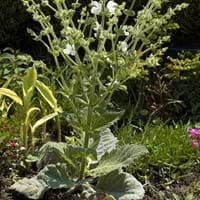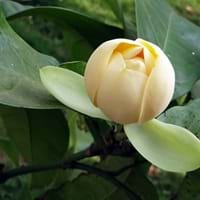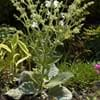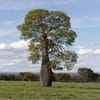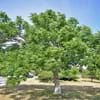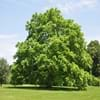Life Span
Biennial
Perennial
Origin
Mediterranean, Northern Africa
Cambodia, China, India, Indonesia, Papua New Guinea, Philippines, Singapore, Thailand, Viet Nam
Types
Not Available
Magnolia angatensis, Magnolia beccarii, Magnolia championii
Habitat
Temperate Regions
Wide range of ecological site
USDA Hardiness Zone
5-8
10-15
AHS Heat Zone
8 - 5
Not Available
Sunset Zone
21,22
Not Available
Habit
Rosette/Stemless
Oval or Rounded
Flower Color
White
Gold, White, Yellow
Flower Color Modifier
Bicolor
Bicolor
Fruit Color
Not Available
Brown
Leaf Color in Spring
Silver
Green
Leaf Color in Summer
Silver
Green
Leaf Color in Fall
Silver
Green, Yellow green
Leaf Color in Winter
Light Green
Gray Green
Leaf Shape
Oval with a pointed tip and fine teeth along their edges
Ovate
Plant Season
Spring, Summer, Fall
Spring, Summer
Sunlight
Full Sun, Partial Sun
Full Sun, Partial Sun
Type of Soil
Clay, Loam, Sand
Clay, Loam
The pH of Soil
Acidic, Neutral, Alkaline
Acidic, Neutral
Soil Drainage
Well drained
Well drained
Bloom Time
Summer, Late Summer, Early Fall
Spring, Late Spring
Tolerances
Not Available
Not Available
Where to Plant?
Ground, Pot
Ground
How to Plant?
Seedlings
Seedlings, Transplanting
Plant Maintenance
Medium
Medium
Watering Requirements
Average Water Needs, Never Over-water, Requires regular watering
Prefer drip-irrigation instead of Over-head watering
In Summer
Lots of watering
Lots of watering
In Spring
Moderate
Moderate
In Winter
Average Water
Average Water
Soil pH
Acidic, Neutral, Alkaline
Acidic, Neutral
Soil Type
Clay, Loam, Sand
Clay, Loam, Sand
Soil Drainage Capacity
Well drained
Well drained
Sun Exposure
Full Sun, Partial Sun
Full Sun, Partial Sun
Pruning
Remove damaged leaves, Remove dead branches, Remove dead leaves
Prune if you want to improve plant shape
Fertilizers
All-Purpose Liquid Fertilizer, Apply 10-10-10 amount
Fertilize in late fall, fertilize in spring, Requires high amount of nitrogen
Pests and Diseases
Red blotch, Slugs, Snails
Aphids, Bacterial Blight, Canker, Crown gall, Hoplia beetle, Leaf burn, Leaf spot, Mealybugs, Powdery mildew, Red blotch, Scorch, Soft scales, Thripes, Wetwood
Plant Tolerance
Drought
Not Available
Flower Petal Number
Single
Single
Foliage Texture
Coarse
Coarse
Foliage Sheen
Matte
Matte
Attracts
Snails
Not Available
Allergy
no allergic reactions
Not Available
Aesthetic Uses
Showy Purposes
Showy Purposes
Beauty Benefits
Not Available
Treatment of Dark Spots
Environmental Uses
Air purification
Air purification
Medicinal Uses
Antiseptic, Astringent
Alzheimer’s Disease, Anxiety, Cancer, Digestion problems, Liver problems, Menstrual Cramps, Respiratory Disorders, Weight loss
Part of Plant Used
Leaves
Whole plant
Other Uses
Used for its medicinal properties
Used as Ornamental plant, Used for its medicinal properties
Used As Indoor Plant
Yes
Yes
Used As Outdoor Plant
Yes
Yes
Garden Design
Bedding Plant, Container, Mixed Border, Rock Garden / Wall
Feature Plant, Foundation, Shade Trees
Botanical Name
SALVIA argentea
Magnolia liliifera
Common Name
Silver Clary, Silver Sage
Egg magnolia
In Hindi
रजत बाबा
Magnolia liliifera
In German
Silver Sage
Magnolia Liliifera
In French
Silver Sage
Magnolia Liliifera
In Spanish
silver Sage
Magnolia Liliifera
In Greek
Silver Sage
Magnolia Liliifera
In Portuguese
silver Sage
Magnolia Liliifera
In Polish
silver Sage
Magnolia Liliifera
In Latin
Argentum Sage
Magnolia Liliifera
Phylum
Magnoliophyta
Tracheophyta
Class
Magnoliopsida
Magnoliopsida
Order
Lamiales
Magnoliales
Family
Lamiaceae
Magnoliaceae
Clade
Angiosperms, Asterids, Eudicots
Angiosperms, Magnoliids
Tribe
Mentheae
Not Available
Subfamily
Nepetoideae
Not Available
Number of Species
Not Available
Not Available
Difference Between Silver Sage and Magnolia Liliifera
If you are confused whether Silver Sage or Magnolia Liliifera are same, here are some features about those plants to help you choose better. Many people think that these two plants have the same characteristics, but one can see Silver Sage and Magnolia Liliifera Information and learn more about it. Fertilizers required for proper growth of Silver Sage are All-Purpose Liquid Fertilizer and Apply 10-10-10 amount, whereas for Magnolia Liliifera fertilizers required are Fertilize in late fall, fertilize in spring and Requires high amount of nitrogen. Hence, one should know the basic difference between Silver Sage and Magnolia Liliifera if you are planning to have them in your garden to enhance its beauty.
<
Flowering PlantsImportance of Silver Sage and Magnolia Liliifera
Want to have the most appropriate plant for your garden? You might want to know the importance of Silver Sage and Magnolia Liliifera. Basically, these two plants vary in many aspects. Compare Silver Sage and Magnolia Liliifera as they differ in many characteristics such as their life, care, benefits, facts, etc. Every gardener must at least have the slightest clue about the plants he wants to plant in his garden. Compare their benefits, which differ in many ways like facts and uses. The medicinal use of Silver Sage is Antiseptic and Astringent whereas of Magnolia Liliifera is Alzheimer’s Disease, Anxiety, Cancer, Digestion problems, Liver problems, Menstrual Cramps, Respiratory Disorders and Weight loss. Silver Sage has beauty benefits as follows: Not Available while Magnolia Liliifera has beauty benefits as follows: Not Available.
Compare Facts of Silver Sage vs Magnolia Liliifera
How to choose the best garden plant for your garden depending upon its facts? Here garden plant comparison will help you to solve this query. Compare the facts of Silver Sage vs Magnolia Liliifera and know which one to choose. As garden plants have benefits and other uses, allergy is also a major drawback of plants for some people. Allergic reactions of Silver Sage are no allergic reactions whereas of Magnolia Liliifera have Not Available respectively. Having a fruit bearing plant in your garden can be a plus point of your garden. Silver Sage has no showy fruits and Magnolia Liliifera has no showy fruits. Also Silver Sage is not flowering and Magnolia Liliifera is not flowering . You can compare Silver Sage and Magnolia Liliifera facts and facts of other plants too.
